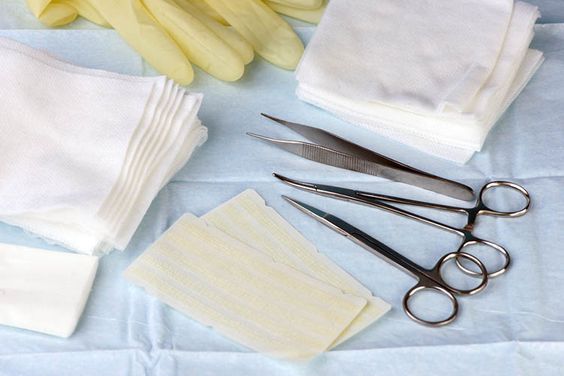Wound healing is a complex and dynamic process that involves the synergy of numerous biochemical and cellular mechanisms. During this process, dead cells, damaged extracellular matrix (ECM), missing structures, and devitalized tissues are gradually replaced by new cells and tissues to restore tissue integrity and function. This article will delve into each aspect of wound healing, so let's take a look.

Wound hemostasis and inflammation :
When tissue is damaged, a hemostatic response occurs first. Platelets quickly gather at the wound and form a clot to stop blood loss. Subsequently, the inflammatory phase begins, and inflammatory cells such as neutrophils and monocytes are recruited to the wound site to remove necrotic tissue and bacteria, creating favorable conditions for the subsequent repair process.
Wound repair stage:
After the inflammatory phase is over, cell proliferation and migration become the dominant processes in wound healing. Fibroblasts begin to proliferate in large numbers and migrate to the wound area. These cells synthesize and secrete ECM components such as collagen to provide a scaffold for the formation of new tissue. At the same time, endothelial cells also begin to proliferate and migrate to the center of the wound, gradually forming a new blood vessel network to provide necessary nutrients and oxygen for wound healing.
Wound remodeling stage:
As cell proliferation and migration proceed, the wound gradually heals. At this stage, the tissue remodeling process begins to occur. Collagen and other ECM components secreted by fibroblasts are gradually remodeled to form a tighter, more orderly structure. At the same time, the blood vessel network gradually improves, providing sufficient nutrients and oxygen for new tissue. Eventually, wound healing is complete and the damaged tissue is replaced by new, structurally and functionally intact tissue.
How do we deal with the wound-healing phase?

The wound healing process is affected by many factors, including age, nutritional status, infection status, chronic diseases such as diabetes, and wound type. In order to improve the quality and speed of wound healing, we need to adopt corresponding strategies to address these factors. Functional wound dressings can be used to help wounds heal faster by using the principle of moist healing.
Wound healing is a complex and dynamic process that involves multiple links such as hemostasis, inflammation, cell proliferation and migration, and tissue remodeling. By deeply understanding the mechanism of this process, we can better respond to various factors that affect wound healing and improve the quality and speed of wound healing.
For more information on Innomed® Hydrocolloid Dressing, refer to the previous articles. If you have customized needs, you are welcome to contact us; we will serve you wholeheartedly.
At Longterm Medical, we transform this data by innovating and developing products that make life easier for those who need loving care.
Editor: kiki Jia

 English
English عربى
عربى Español
Español русский
русский 中文简体
中文简体








